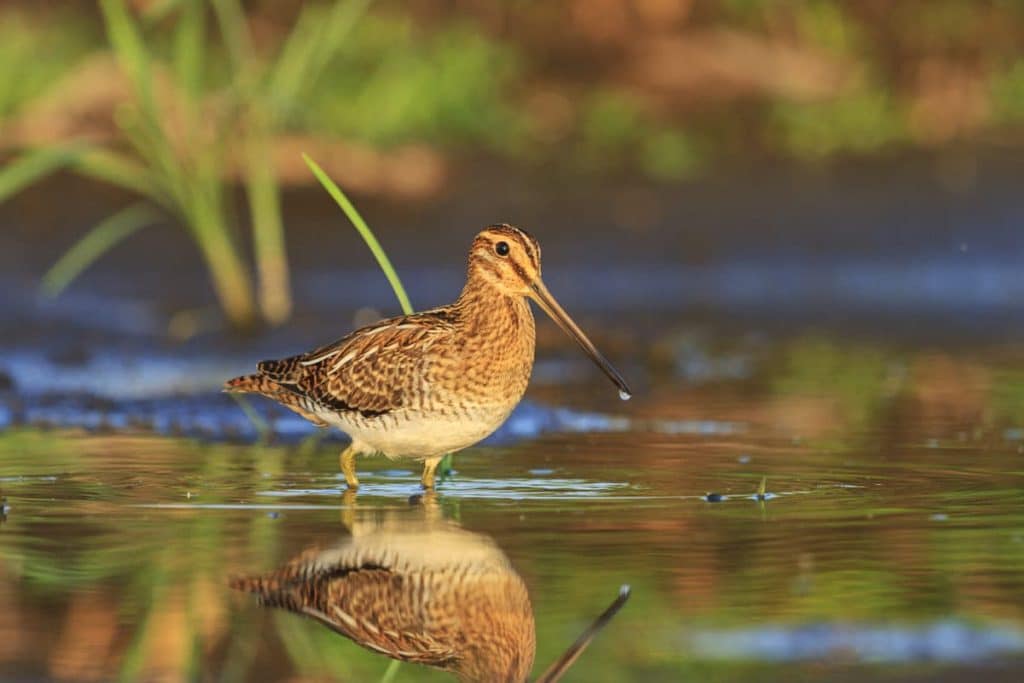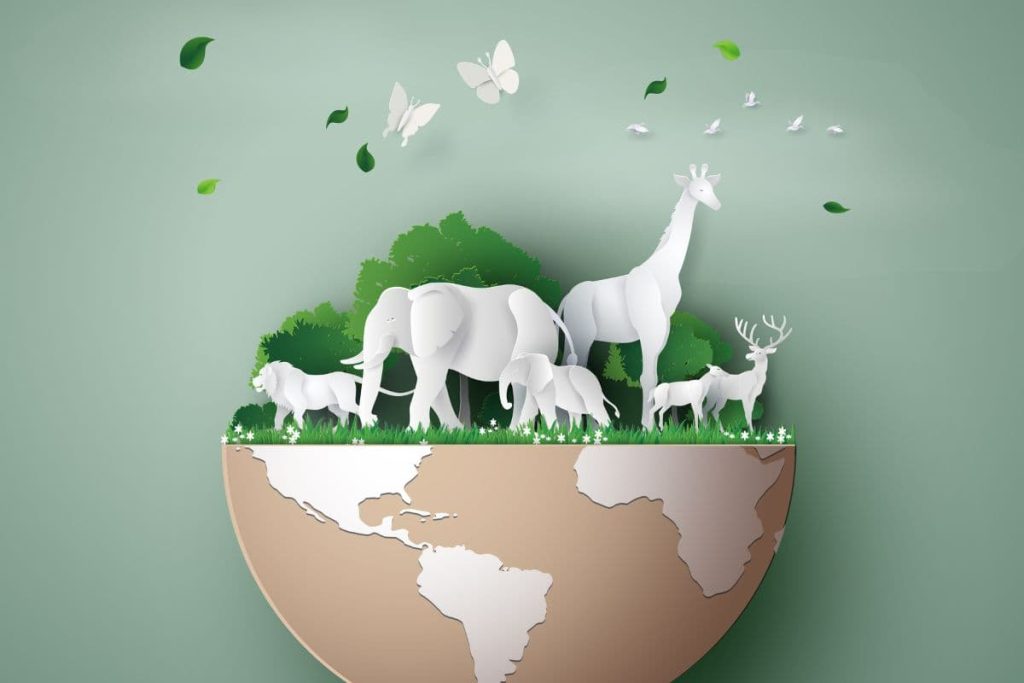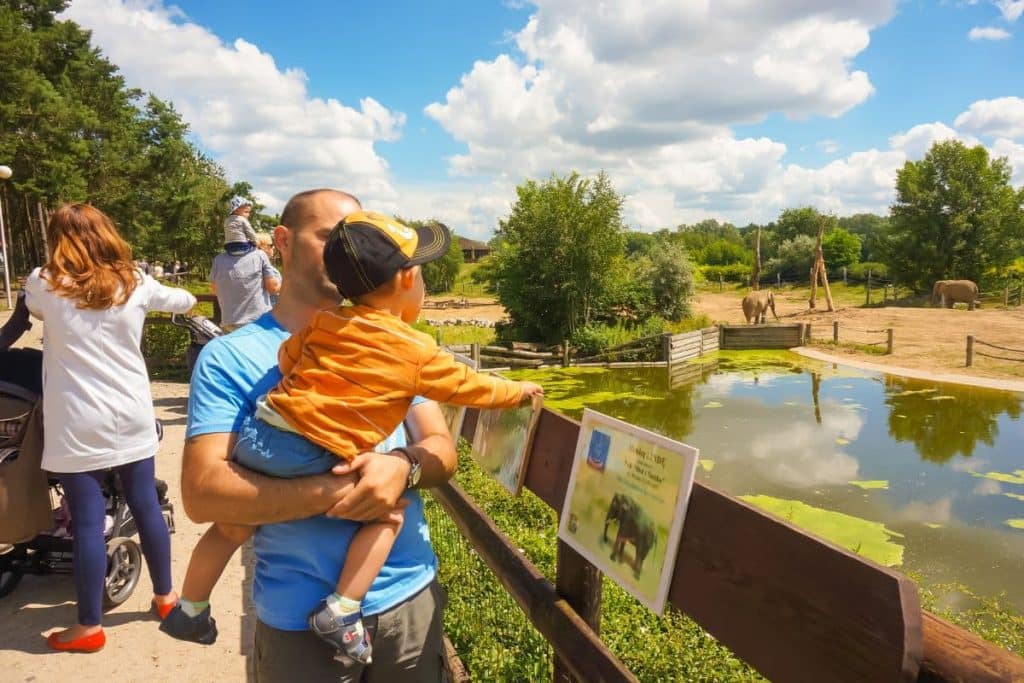The world’s wildlife is a testament to the earth’s incredible biodiversity. However, our planet’s wildlife is under threat, and the need for conservation has never been more urgent. This threat is what makes the annual global celebration of World Wildlife Day so essential. It’s a day to raise awareness, celebrate the life forms that share our planet with us, and mobilize efforts to protect them for future us.
World Wildlife Day, marked every year on March 3, is not just a day. It’s a call to action for every one of us. Whether we’re educators, students, policymakers, or just concerned citizens, we each have a role to play in the fight to protect our world’s wildlife.
Key Takeaways:
- World Wildlife Day is an annual celebration of the world’s wild animals and plants that aims to raise awareness about conservation.
- Celebrating World Wildlife Day 2024 emphasizes collaboration between multiple stakeholders for successful wildlife conservation, such as international organizations, indigenous peoples and local communities.
- Families and schools can engage in educational activities to honor World Wildlife Day, while participation online can be encouraged through social media platforms using hashtags such as #WorldWildlifeDay or #ProtectOurWildlife.
Understanding World Wildlife Day

World Wildlife Day is an annual global celebration of the world’s wild animals and plants that happens on the 3rd of March annually. This day was chosen to coincide with the birthday of the Convention on International Trade in Endangered Species of Wild Fauna and Flora (CITES), signed in 1973 to safeguard our world wildlife. So, let’s celebrate World Wildlife Day and raise awareness about the importance of protecting endangered species.
Every year, the CITES Secretariat organizes the World Wildlife Day and associated world events, aiming to increase our understanding of the importance of wildlife, including polar bears, and the dangers they face from climate change and habitat destruction.
The Role of the United Nations
The United Nations plays a significant role in the world’s wild animals by promoting World Wildlife Day. It supports initiatives and campaigns to protect endangered species and their habitats and encourages member states to implement policies and regulations to combat wildlife crime, trafficking, and illegal trade. The United Nations furthers this cause by arranging occasions, campaigns, and activities that highlight the value of wildlife and the necessity to protect many animals and endangered species. It also encourages member states and individuals to take action to guard biodiversity and encourage sustainable development.
The United Nations has implemented several initiatives and policies for wildlife conservation. These include:
- Creating wildlife corridors for endangered species
- Securing water supplies
- Ensuring that the harvesting, trade, and use of wild species are sustainable, legal, and safe for human health
- Collaborating with external sites and organizations to promote conservation efforts
These actions by the United Nations have promoted worldwide involvement in World Wildlife Day, underlining the significance of maintaining both humans and animals’ ecosystems.
Impact of Climate Change and Habitat Loss
The main causes of the decline in wildlife populations and biodiversity are climate change and habitat loss. The impacts of climate change on wildlife populations are widespread, from decreased survival rates to full extinction, range shifts and habitat alterations. These changes can have serious repercussions on marine mammals and increase the risk of invasive species.
Habitat loss directly contributes to a decrease in wildlife populations and biodiversity as it:
- Reduces the available space and resources for species to survive and prosper
- Deprives animals of their homes and forces them to contend for limited resources such as food, water, and shelter
- Leads to elevated stress, diminished reproductive success, and higher mortality rates
- Disrupts ecological processes and relationships, such as pollination and seed dispersal, which are essential for preserving biodiversity
- Can cause species to decrease in numbers or even become extinct, resulting in a loss of overall biodiversity in the ecosystem.
Some of the species most adversely affected by climate change and habitat loss include penguins, butterflies, rodents, plants, coral, and elephants.
Celebrating World Wildlife Day 2024: Partnerships for Wildlife Conservation

The subject for World Wildlife Day 2024 is “Cooperation for Wildlife Conservation”. This theme underlines the critical role of collaboration in wildlife conservation. The UN is a strong proponent of collaboration between its agencies, private sector organizations, philanthropies, and non-governmental organizations for the advancement of wildlife conservation and sustainable use. It also believes that this partnership will be helpful in combating illegal wildlife trade and halting the depletion of wildlife..
Partnerships are an essential component of wildlife conservation, ranging from large-scale initiatives to small-scale efforts such as organizing a school sale to benefit a conservation group or posting photographs online to raise awareness of endangered species. Collaboration acknowledges that conservation is a shared responsibility and cannot be achieved by a single entity or person alone.
Organizations, governments, NGOs, local communities, and individuals are all integral to partnerships for wildlife conservation.
CITES: A Key Player in Wildlife Conservation
CITES, the Convention on International Trade in Endangered Species of Wild Fauna and Flora, collaborates intensively with other bodies to against wildlife crime and guarantee the commemoration of World Wildlife Day. CITES is a vital organization in wildlife conservation and has achieved a number of notable successes through various means. It has enabled local communities to benefit from the sustainable use of wildlife and provided protection for animal and plant species.
CITES was first proposed at a 1963 meeting of the International Union for the Conservation of Nature (IUCN) and has since become a worldwide authority on wildlife conservation. It has significantly influenced international laws and policies regarding wildlife conservation by regulating and limiting the international trade of endangered wildlife.
It is an international agreement signed by 183 nations and encompasses more than 35,000 species of plants and other wild animals and plants.
CITES aims to ensure that international trade does not lead to the extinction of wild species.
Successful Conservation Partnerships
Examples of successful conservation collaborations can be from external sites found worldwide. The CITES has established successful conservation partnerships with various organizations and initiatives, including:
- The Convention on the Conservation of Migratory Species of Wild Animals (CMS)
- The Food and Agriculture Organization (FAO)
- The American alligator conservation efforts
These partnerships aim to safeguard biodiversity and prevent over-exploitation by regulating trade and promoting sustainable practices.
Indigenous Peoples and local communities, as sustaining people, also play a crucial role in successful conservation partnerships. Their contributions include:
- Acting as environmental stewards
- Deep knowledge of the land and traditional practices
- Active management of their lands
- Preservation of ecosystems
Public-private partnerships have been observed to facilitate successful wildlife conservation through:
- Increased funding
- Improved management
- Enhanced sustainability
- Implementation of innovative technologies and approaches
Educational Activities for Families and Schools

Participating in educational activities is an excellent method to honor and celebrate World Wildlife Day. Here are some ideas:
- Interactive learning tools
- Visiting zoos and wildlife reserves
- Taking children on a habitat hunt
- Challenging them to make a difference for wildlife
- Having a wildlife dress-up day
- Constructing a bird feeder
- Embarking on a wildlife safari walk
- Embracing a tree
- Conducting an alphabet nature hunt
These activities can be fun and educational.
Schools can incorporate World Wildlife Day into their curriculum by:
- Including nature and wildlife themes into classroom routines and activities
- Providing lessons and activities that raise awareness about wildlife conservation and sustainability
- Utilizing resources and educational materials specifically designed for World Wildlife Day.
Interactive Learning Tools
Children can use interactive learning tools like apps and websites to learn about wildlife conservation. Some examples of these tools include:
- WWF Together app
- Mongabay website
- Conservation Careers website
- Staying Cool in the Library website
These tools offer current news, resources, and educational materials related to wildlife conservation.
Utilizing interactive learning tools in teaching kids about wildlife conservation has numerous advantages. They:
- Capture the attention and interest of children, making the learning experience more engaging
- Allow children to actively partake and interact with the content, improving their comprehension of wildlife conservation concepts
- Often comprise visual elements, such as images, videos, and interactive graphics, which assist children in visualizing and comprehending complex concepts related to wildlife conservation
- Stimulate active participation and nurture critical thinking, problem-solving abilities, and creativity
These advantages make interactive learning tools an effective way to educate children about wildlife conservation.
Visiting Zoos and Wildlife Reserves
A visit to zoos and wildlife reserves provides a variety of learning advantages, such as:
- Conservation education programs
- Public education and entertainment
- Scientific research and conservation efforts
- Preservation of genetic biodiversity through breeding programs
- Reintroduction of critically endangered species into the wild
They also offer educational opportunities for children through summer camps and school programs, enabling them to gain knowledge about animal species and their habitats.
To prepare for a visit to a zoo or wildlife reserve, it’s essential to conduct research on the facility, ascertain the visiting hours and rules, dress suitably, devise a plan for the visit, bring along the necessary supplies, show respect to the animals, and take advantage of the educational opportunities available.
Zoos and wildlife reserves offer interactive experiences that seek to motivate visitors to partake in conservation-related activities. These experiences typically include close encounters with animals and educational programs that encourage awareness and comprehension of wildlife conservation.
Hosting Your Own World Wildlife Day Event
Organizing your own World Wildlife Day event is an excellent method to involve your community in wildlife conservation. Planning such an event involves:
- Spreading information about the importance of wildlife protection
- Acquiring knowledge regarding the species that are facing hazards
- Arranging activities or events
- Stimulating individuals to take part by donning wildlife-themed clothing or accessories on March 3rd.
To facilitate a successful Wildlife Day event, the following resources can be very helpful:
- Activities for children in the classroom
- An event planning guide for hosting a tree giveaway event
- Information and resources from the official World Wildlife Day website
- Ideas and action plans for celebrating and advocating for the environment
- Additional resources and updates from the Geneva Environment Network
Planning and Promotion
Organizing a World Wildlife Day event requires a few essential steps:
- Determine the purpose and theme of the event.
- Set a date and location.
- Create a budget.
- Develop a program or schedule of activities.
- Invite speakers, performers, or exhibitors.
- Promote the event through various channels such as social media, websites, and local media.
- Coordinate logistics.
The United Nations offers resources for the planning of World Wildlife Day events. These resources can be found on the official United Nations website.
There are several successful examples of World Wildlife Day event planning and promotion. Some examples include:
- Partnerships for Conservation
- The Geneva World Wildlife Day Celebration
- Awareness and Action campaigns
- Education and Engagement initiatives
These organizations have effectively planned and promoted their World Wildlife Day events.
Ideas for Events and Activities
There are many activities that can involve your community in wildlife conservation. These include:
- Taking kids on a habitat hunt, focusing on food chains and food webs
- Challenging students to make a difference for wildlife
- Having a wildlife dress-up day
- Volunteering with a local wildlife preserve, botanical garden, or national park
- Engaging in wildlife tracking, nature photography, nature bingo, or owl calling activities
In addition to these activities, environmental games can play a significant role in community events for wildlife conservation. They offer an interactive and entertaining way to raise awareness, promote pro-environmental behavior, and instill a sense of responsibility towards wildlife and their habitats.
Art can also be used to promote wildlife conservation during World Wildlife Day events through art exhibitions, workshops, live demonstrations, contests, and installations.
Get Involved Online: Social Media and World Wildlife Day

Engaging in World Wildlife Day online is another efficient method to increase awareness and motivate others to participate. Utilizing hashtags such as #WorldWildlifeDay and sharing educational material on social media platforms are powerful methods to spread the message.
#WorldWildlifeDay and #ProtectOurWildlife are among the most popular hashtags for World Wildlife Day.
Using Hashtags and Sharing Resources
#WorldWildlifeDay and #WWF are frequently used on social media to advocate for World Wildlife Day. These hashtags group conversations, enhance exposure and utilize indexing and grouping features to boost the reach of the conservation message.
Educational resources that can be shared on social media for World Wildlife Day include:
- Teaching resources and activities for children
- Informative and awareness-raising posts regarding wildlife
- Social media post ideas from organizations
- Encouragement of others to participate using the hashtag #WorldWildlifeDay.
When disseminating resources on social media, it’s essential to correctly attribute them to uphold credibility and respect for the original creators. This includes:
- Republishing the initial content
- Adhering to MLA format
- Including the link
- Recognizing the individual or organization
- Utilizing Creative Commons attribution.
Wrapping Up World Wildlife Day
From understanding the importance of World Wildlife Day, to exploring the role of partnerships in wildlife conservation, to engaging in educational activities to raise awareness and hosting your own World Wildlife Day event, we’ve covered a lot of ground. World Wildlife Day is an opportunity for us all to celebrate the wonderful biodiversity of our planet and to take action to protect it. Whether raising awareness, educating others, or participating in conservation efforts, every action counts.
Let’s not forget that protecting our world’s wildlife is not just about saving wild animals, and plants. It’s about preserving the intricate web of life that sustains us all. So, on this World Wildlife Day, let’s celebrate, let’s learn, and most importantly, let’s act. Because every one of us has a part to play in this crucial work of wildlife conservation.
Frequently Asked Questions
How do we celebrate National Wildlife Day?
On National Wildlife Day, we celebrate by learning more about our beloved animal friends and participating in activities such as presentations, fund-raising for rehabilitation services, and donating to zoos.
What does World Wildlife Day celebrate?
World Wildlife Day, celebrated on March 3rd each year, recognizes and celebrates the incredible diversity of life on planet Earth, from majestic whales to delicate butterflies.
What is the theme for World Wildlife Day 2024?
For this year’s World Wildlife Day in 2024, the theme is “Partnerships for Wildlife Conservation”, highlighting the importance of working together to protect our wildlife.






